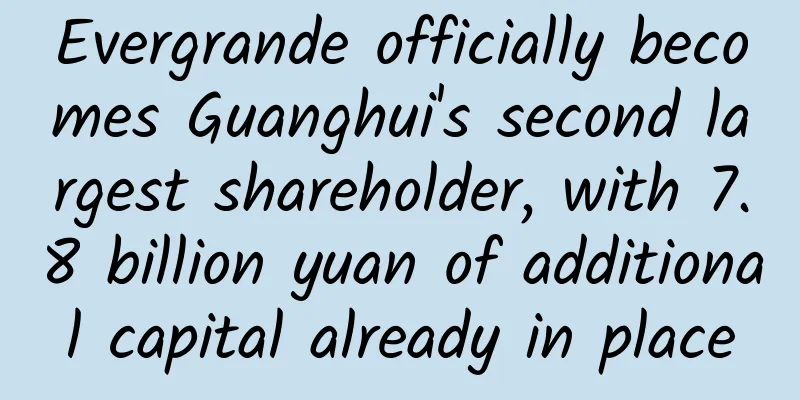NASA will pay you a high salary if you stay in this house for a year

|
On July 6, 2024, in Houston, USA, four volunteers opened the door of the isolation cabin and returned to Earth from "Mars". The four volunteers did not actually go to Mars, but participated in a Mars simulation project of NASA, called the Crew Health and Performance Exploration Analog (CHAPEA) mission. The interior of CHAPEA. Image credit: NASA Simulated Mars Camp The relative positions of the Earth and Mars are constantly changing, and there is only one Mars exploration window every two years. So once astronauts land on Mars in the future, they will need to live on Mars for a considerable period of time. Therefore, NASA has set up the CHAPEA mission to simulate in advance the impact of astronauts' long-term isolation from the outside world on their physical and mental health. In order to simulate a real Mars base, NASA used 3D printing technology to create a 158-square-meter Mars base . The cost of transporting building materials to Mars is too high, and using local materials and 3D printing on Mars soil may be a better choice. This 158-square-meter Mars base contains 4 private dormitories, 1 public rest area, 1 studio, 1 medical room, and 1 kitchen and vegetable cultivation room. The whole building is red, which simulates the color of Martian soil and tests the impact of building color on volunteers in long-term isolation. The interior of the CHAPEA "Mars Base". Image credit: NASA There is also an airlock at the end of the Mars base. Passing through the airlock, the "outdoors" of the Mars base is a small simulated Martian landscape - although it is a bit crude, with only a layer of red sand on the ground. The simulated Martian landscape uses a membrane to isolate the gas exchange with the Earth's atmosphere, but in this experiment, there is no pressure difference between the inside and outside of the airlock. In order to simulate the real Martian environment, NASA arranged a treadmill here and paired it with a pair of VR glasses. Sometimes, volunteers are asked to "go out of the cabin" - wearing a space suit, wearing VR on the treadmill, and simulating walking on Mars. This is the first of three experiments planned for the CHAPEA mission, and the experiment team consists of four volunteers: mission commander Kelly Haston, engineer Ross Brockwell, medical officer Nathan Jones and science officer Anca Selariu. On June 25, 2023, they entered their new home at NASA's Johnson Space Center and began a 378-day simulated life on the surface of Mars. From this point on, no more food will be delivered to the base. They must carefully plan their diet, balance their diet, and use the stored food to support the experiment for more than a year. If they want some fresh supplements besides packaged food, they can only grow their own vegetables, which is also a way for them to relieve their worries. Volunteers cannot go out, and the only "outdoor" place is a small piece of red sand. When they go out, they have to wear space suits to simulate the situation on Mars. CHAPEA volunteers take a group photo before the experiment begins. Image credit: NASA/Josh Valcarcel Unfortunately, the distance between the real Mars and Earth is relatively long, fluctuating between 3 and 22 light minutes, which means that the one-way communication delay between Earth and Mars is between 3 and 22 minutes. To simulate this phenomenon, the volunteers' network was set to have a 22-minute delay with Earth, which means that if they want to contact the world outside the cabin, it will take at least 44 minutes to receive a response. The CHAPEA experiment will also give volunteers some scientific research tasks to complete every day, just like the real Mars exploration. At the same time, the experimental team will also issue some instructions for simulated failures. After encountering these simulated failures, the volunteers must handle these tasks in a timely manner due to communication delays. These four volunteers left their families and friends, endured a 22-minute delay, gave up their jobs, and endured the loneliness of being cut off from the world for more than a year to help NASA explore the effects of long-term isolation on Mars. NASA needs to give them some compensation. According to the Houston Chronicle, NASA will pay these volunteers $10 per hour, accounting for only 16 hours of wakefulness per day, which is equivalent to a full-year salary of about $58,000, or 420,000 RMB at today's exchange rate. The median annual income of an individual in the United States in 2023 is $48,000, so a full-year income of $58,000 is a good level. Staying at home every day and watching your account balance continue to rise is a very interesting thing, but after a long time, you will want to do something else. So NASA also invited them to start a podcast. The host will record his own recording and send it to the volunteers. After receiving it, the volunteers will answer according to the host's questions, send it outside the base, and then edit it outside the base. Throughout the mission, they produced a total of 10 podcasts. Judging from the podcasts, the volunteers' emotions have been very stable. In the first podcast, they said they were very satisfied with their new home. In the third podcast, which was three months after the experiment began, they realized how long a year would be. In the fifth podcast, 150 days after the experiment began, the vegetables they cultivated were mature and they enjoyed the fresh vegetables. In the tenth podcast, 11 months after the experiment began, the volunteers were still emotionally stable and said they were ready to leave the spacecraft. In the end, the experiment ended as planned after 378 days, and the volunteers successfully lived in the simulated Mars base for more than a year in isolation and without material assistance. Currently, volunteers for the second phase of the CHAPEA trial have been finalized, and applications for the third phase of the trial will begin next fall. (Applicants must be U.S. citizens) Moon Palace No.1 In fact, China has also conducted similar experiments. On May 10, 2017, the "Moon Palace No. 1" on the campus of Beijing University of Aeronautics and Astronautics was officially sealed. "Moon Palace No. 1" is highly isolated from the outside world, and its interior is a miniature ecosystem in which oxygen and water are 100% recycled. There are 8 volunteers on "Moon Palace No. 1", divided into two groups. The first group will perform a 60-day mission, and the second group will be closed for another 200 days. The first group will then be on duty for another 105 days. After the mission was completed, the experimental team also simulated an emergency and extended the experimental time by another 5 days. The total duration of the experiment reached 370 days. In the "Moon Palace No. 1" experiment, volunteers also planted a lot of vegetables. When they left the cabin, they also shared the soybeans, wheat, carrots, peppers, tomatoes, etc. they planted in the closed cabin with the people outside the cabin. In order to supplement protein, some volunteers also learned to eat mealworms. These mealworms feed on plant stalks and old leaves of vegetables, and are also part of the waste treatment system. Volunteers said that the taste of fried mealworms is similar to that of fried grasshoppers, "fragrant, tender, crisp and crunchy", with a slightly bitter aftertaste, but a long aftertaste. However, they did not share the fried mealworms with the cheering crowd after leaving the cabin. Volunteers carry soybeans, wheat, carrots, peppers, tomatoes and other crops grown in the "Moon Palace" out of the cabin. Image source: Beijing University of Aeronautics and Astronautics Although the volunteers' schedules are repetitive, they do not find it boring. Outside of the scheduled work time, they read books, listen to the radio, and do yoga. They also celebrate together on special days such as the Spring Festival and birthdays. The isolated environment even improves their work efficiency. If you think about it this way, information can be as addictive as sugar. We all know that we should control our sugar intake, but we rarely pay attention to the intake of information. Both the CHAPEA mission and the "Moon Palace 1" mission have created an isolated environment for volunteers. After reducing interference, their mental health may be healthier. Well, I am ready to be isolated from the outside world, and I am willing to make my own contribution to human exploration of Mars in the next second. Then, the most critical question is, where can I get the money? References [1]https://www.universetoday.com/167778/volunteers-complete-a-simulated-year-on-mars/ [2]https://www.nasa.gov/humans-in-space/chapea/ [3]https://www.syfy.com/syfy-wire/how-much-does-it-pay-to-live-in-a-mars-simulator-for-a-year [4]https://buaa.edu.cn/info/1733/4154.htm [5]http://news.buaa.edu.cn/info/1006/43703.htm Planning and production Source: Global Science Editor: He Tong Proofread by Xu Lai and Lin Lin The cover image and the images in this article are from the copyright library Reprinting may lead to copyright disputes |
<<: Who knocked on the underground "gate" of the Shang Dynasty?
>>: Breathing in liquid, from the deep sea to space
Recommend
NetQin wades through "muddy water": all charges are cleared and the stock price surges 34%
In response to the fraud allegations made by shor...
The system is smooth, and Jobs' last legacy has also been ruined. Android's closed source will solve the problem of lag once and for all
With the development of science and technology, p...
collect! 0-cost way to promote your app overseas!
In today's environment where overseas traffic...
Overseas promotion and marketing, complete tutorials on YouTube advertising!
Today I will introduce to you the YouTube adverti...
The Information: ChatGPT’s paid users exceed 20 million, revenue surges 30%
Recently, according to The Information, ChatGPT, ...
Does the LeEco crisis herald the closure of the Internet boom?
There are two things that have been hot these day...
How to keep your community active? Here are 2 tips to share with you!
Community activity is a difficult problem faced b...
Can LeEco’s smartphone ecosystem continue to differentiate itself?
Recently, a high-definition spy photo of LeTV'...
How do SEM bidders earn over 10,000 yuan a month?
1. Avoidance (Basics) 1. To avoid dead links, alw...
Mom's Body Shaping Class
Introduction to Mom's Body Shaping Class Reso...
What is a good product and how can a good product make money for a company?
Any business model and product that is not aimed ...
Nvidia's financial report: Nvidia's revenue in Q4 2025 was US$39.331 billion, a year-on-year increase of 78%
Nvidia (NVDA.US), the chipmaker at the center of t...
How QQ and WeChat platforms create aggregators of users’ scattered information!
There is no doubt that WeChat and QQ have become ...
World Bank: 2022 China Country Climate and Development Report
The China National Climate and Development Report...
Traffic jam on the highway during Chinese New Year? Let’s “fly” in the future!
In recent years, with the continuous advancement ...









